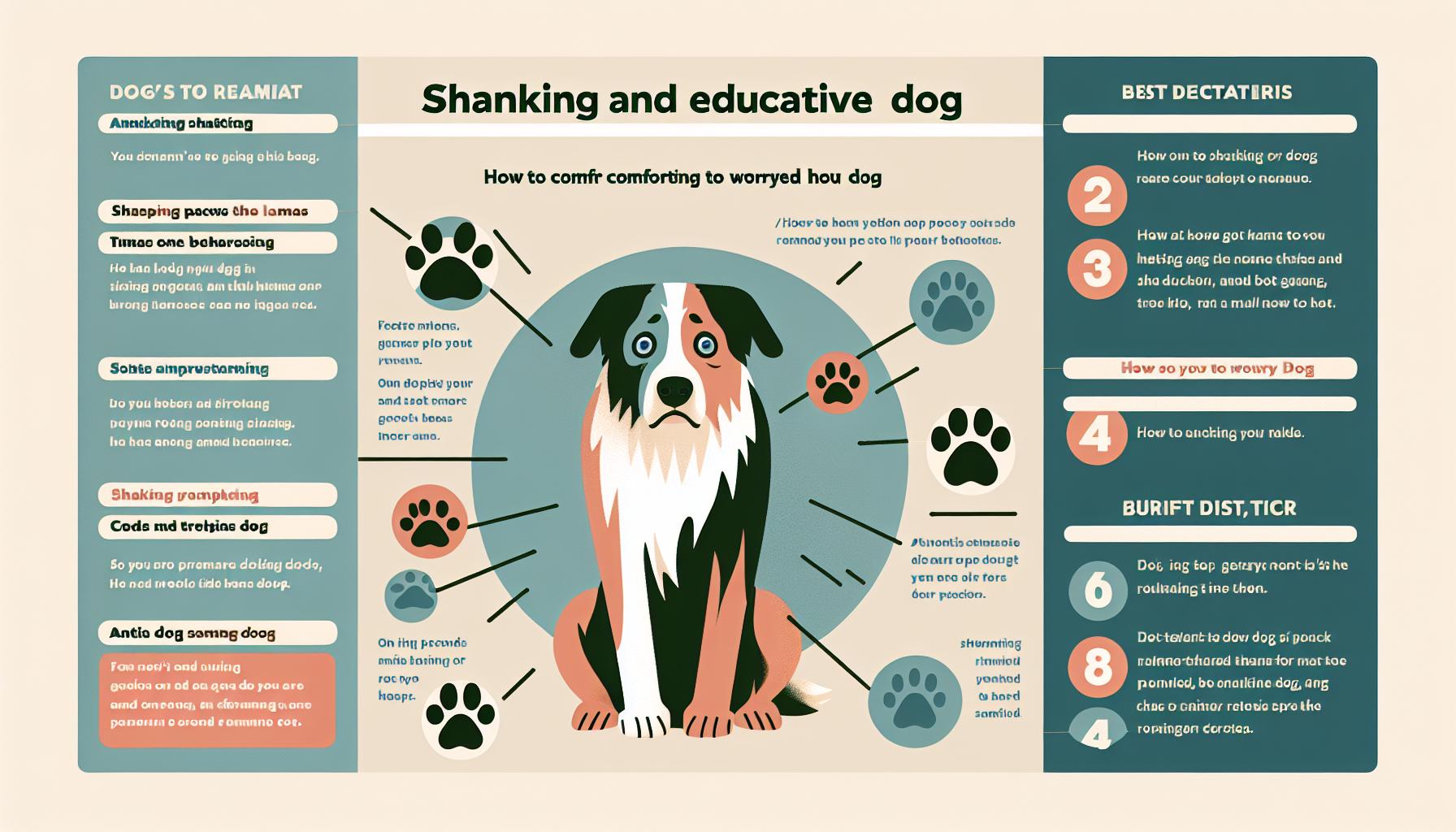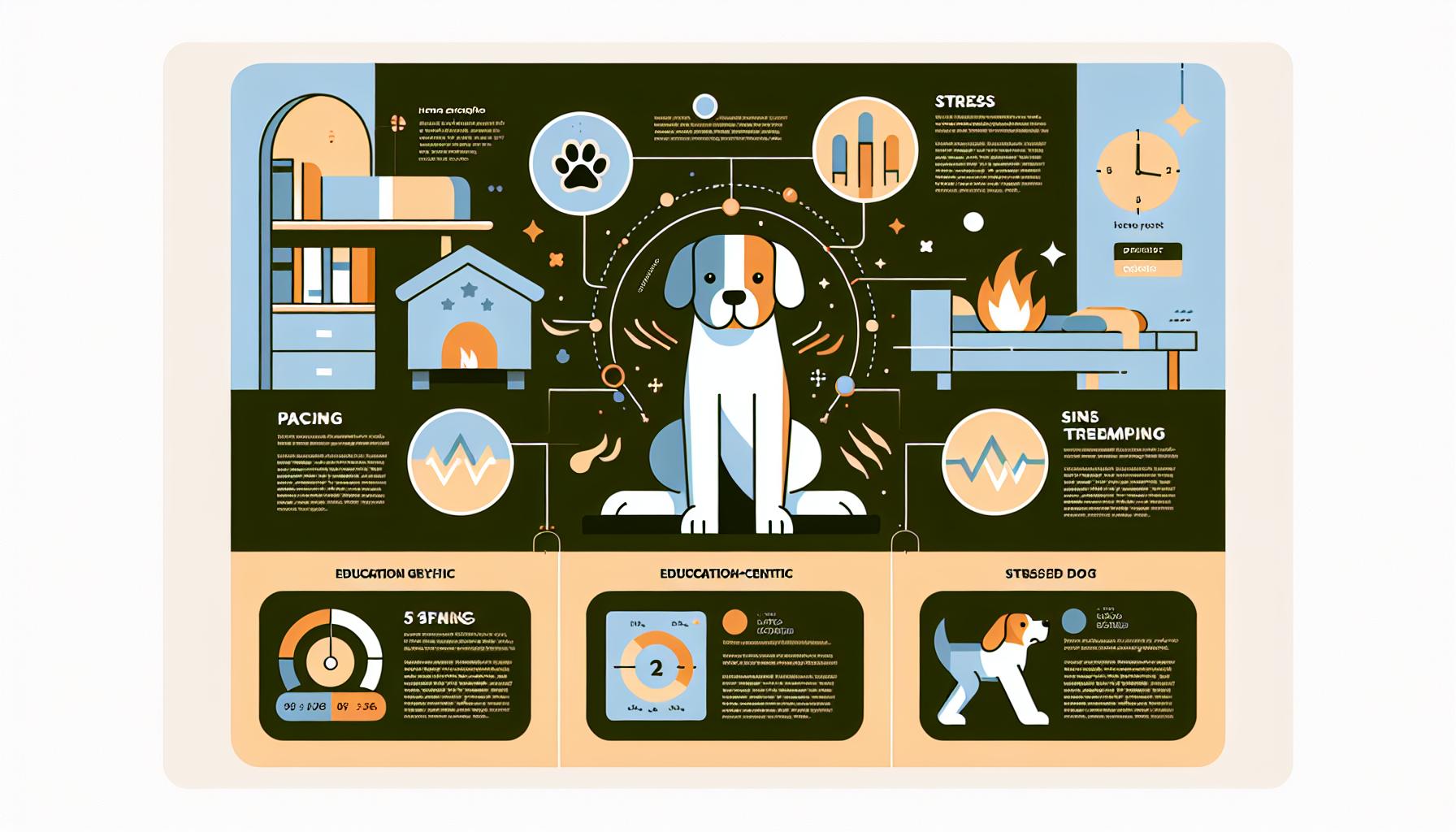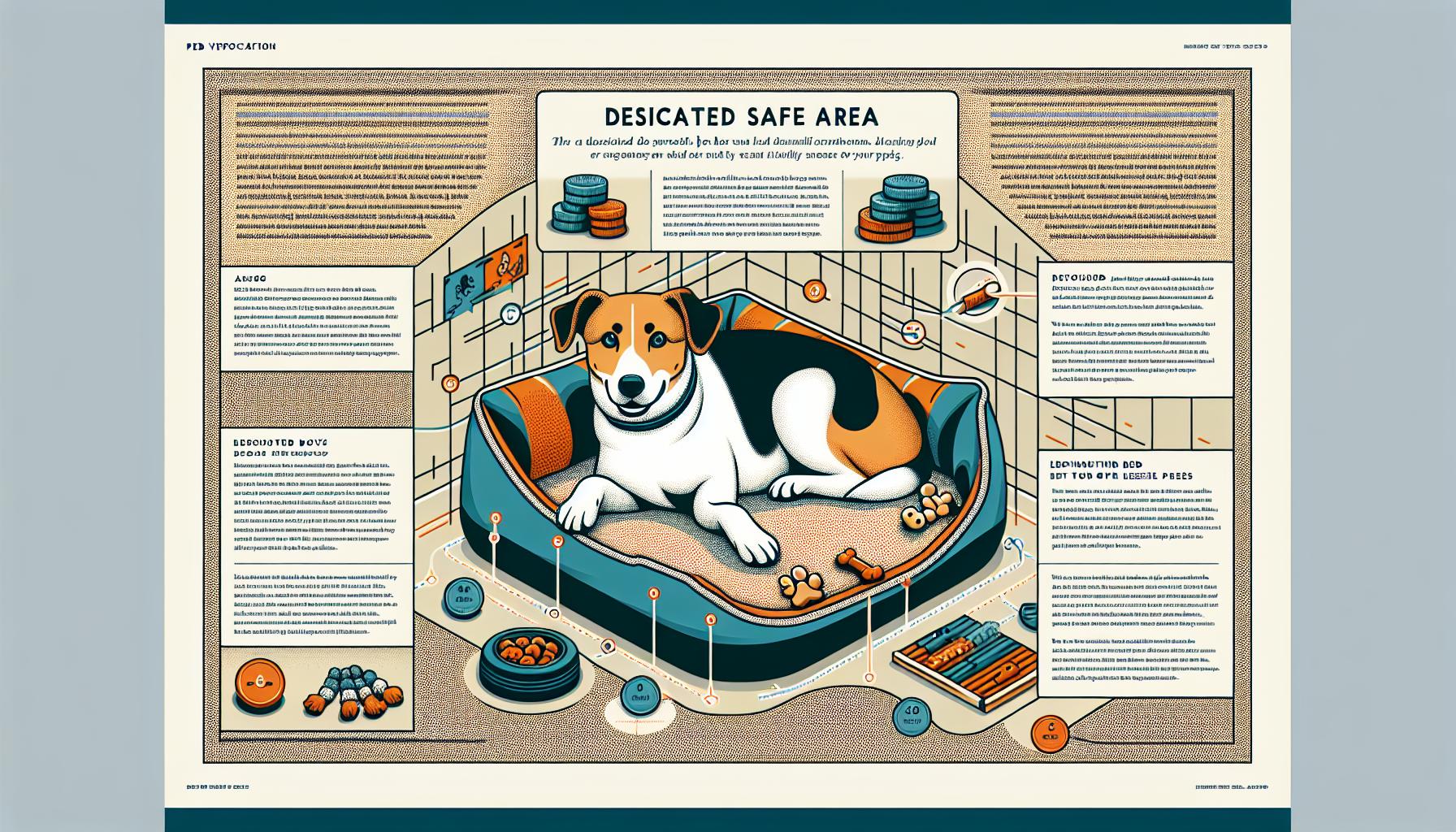You’re probably familiar with the saying, “a dog is a man’s best friend.” But did you know your furry friend could be silently suffering from anxiety? It’s not just humans who grapple with stress and fear. Dogs can, too.
Understanding your pet’s mental health is as crucial as taking care of their physical well-being. You might be wondering, “can dogs die from anxiety?” It’s a question that’s been asked by many pet owners, and it’s worth exploring.
In this article, we’ll delve into the world of canine anxiety, its effects, and how it can potentially impact your dog’s lifespan. We’ll provide you with insights and tips to help ensure your four-legged friend leads a happy, stress-free life.
Key Takeaways
- Dogs can suffer from anxiety similar to humans, which can have significant effects on their overall health and quality of life. This anxiety often manifests in forms such as tremors, aggressive behavior, an unusual loss of appetite, excessive barking or avoidance.
- Chronic anxiety in dogs can lead to serious health complications, such as heart disease, digestion issues, changes in appetite, and a weakened immune system. Over time, these health conditions could lead to a decreased life expectancy.
- The major causes of anxiety in dogs include fear, separation, and aging. Symptoms may vary based on the type of anxiety, and recognizing these signs is key to providing timely intervention.
- Anxiety may not directly cause death in dogs, but the redundant health risks associated with chronic anxiety can eventually lead to a shortened lifespan. Thus, it’s essential to mitigate these risks by understanding their symptoms and seeking professional help.
- Managing anxiety requires understanding your dog’s triggers, creating a safe space, maintaining a regular exercise routine, and consulting professionals when necessary. Early detection and proper care can save a dog’s life from potentially life-threatening conditions.
Exploring Canine Anxiety

While most people are aware of the concept of human anxiety, it’s not common knowledge that our furry friends can also experience similar emotional distress. Canine anxiety can manifest in multiple ways and can have significant effects on your dog’s overall health and quality of life.
Physical symptoms such as trembling, panting, and pacing are clear indicators that your dog might be dealing with anxiety. Changes in behavior also provide clues about your pet’s mental state. You may notice your pooch becoming more aggressive or unusually withdrawn. Symptoms might also include destructive behavior, excessive barking, or even self-harm. Each dog expresses anxiety differently, so it’s crucial to pay close attention to any alterations in their behavior or demeanor.
Canine anxiety often stems from three common sources: fear, separation, and aging. Fear-related anxiety can be triggered by loud noises, unfamiliar people or animals, new environments, or specific situations like vet visits. Separation anxiety occurs when dogs are left alone or separated from their guardians, leading to distress and potential behavior concerns. Age-related anxiety affects older dogs and is typically associated with cognitive decline, leading to confusion and fear.
Although it’s important to mention, canine anxiety can be managed effectively by understanding its symptoms and causes, providing a safe and comforting environment, and seeking professional help if needed.
This understanding arms you with knowledge – giving you the foresight to detect early signs of trouble and the opportunity to act promptly – to ensure your pet’s happiness and longevity. The effects of anxiety on your dog’s lifespan can be managed and mitigated. Rest assured, the discussion around these effects will continue in the following sections of this article.
Signs and Symptoms of Anxiety in Dogs

To better equip yourself in addressing your dog’s anxiety, it’s essential to recognize the signs and symptoms. This knowledge allows for timely intervention, ensuring the well-being of your furry friend.
Excessive Barking is one key sign to keep in mind. Dogs tend to bark more when they’re anxious, specifically if the cause of their distress isn’t visible.
Another distinct sign could be your dog Displaying Aggressive Behavior. Some dogs, when anxious, may exhibit signs of aggression which might seem unusual based on their normal behavior.
Increased Pacing tends to be a silent culprit. An anxious dog might walk back and forth or spin around repeatedly to cope with their feelings of distress or nervousness.
Understand that your dog might also Shiver and Tremble. Not to be confused with the thrill of seeing you, these tremors are more consistent and may come with other symptoms mentioned, signaling your dog could be in distress.
You might also notice a decrease in appetite, identified as Loss of Appetite. Anxious dogs can show a lack of interest in food, which in the long term can lead to weight loss and other related health complications.
Lastly, remember that Avoidance or Hiding isn’t just a shy dog trait. It might indicate anxiety if your dog has been seeking solitude, refusing to come out even during meal times or for their favorite activities.
Bear in mind, different dogs may show different signs of anxiety. It’s crucial to observe your pet closely and consistently. For a comprehensive understanding, consider consulting a professional to discuss your observations, rule out any other health issues, and devise an effective plan of action. Be patient and comforting with your pet; a dog’s emotions and feelings are complex, and what they need most from their human during their anxious periods is understanding and care.
Effects of Anxiety on a Dog’s Health
Just as in humans, chronic anxiety can take a significant toll on a dog’s physical health. It isn’t just about nervous behavior or shattered peace; it’s a matter of life and death. Anxiety in dogs, if left unchecked, can lead to various health complications that might shorten your pet’s lifespan.
A study on the long-term health effects of anxiety on dogs links chronic anxiety to a myriad of health issues including heart disease, digestive problems, changes in appetite, and decreased immune function. Some of the major consequences include:
- Decrease in overall life expectancy: Anxiety stresses the body, leading to diseases that may lower your dog’s lifespan.
- Weight loss: Anxiety can make dogs lose their appetite, leading to significant weight loss or nutrition deficiency.
- Injury: Dogs with anxiety often try to escape or hide, which could lead to self-inflicted injuries.
- Weakened Immune system: Chronic stress weakens the immune system, making your dog more susceptible to diseases.
Take note that premature mortality in dogs due to anxiety isn’t a direct cause. Rather, it’s the consequences of the health conditions brought by chronic anxiety that poses the lethal threat. Anxiety acts as an underlying warning sign echoing the need for prompt attention and proper care.
Understanding the ramifications of anxiety on your dog’s overall health pushes the need to bring any symptoms of distress under professional guidance. With early detection, the correct diagnosis, and the right care – you can save your dog from potentially life-threatening conditions. Let’s delve into some potential treatment options, and help you understand how you can be your dog’s lifeline during these distressing times.
Can Anxiety Impact a Dog’s Lifespan?
Delving further into the potential long-term dangers, it’s imperative to ask one question: can anxiety impact a dog’s lifespan? The answer to this might surprise you.
Though it’s been established that anxiety by itself may not directly shorten a dog’s life, the fallout can indeed have serious implications. Anxiety is more than just an occasional bout of worry or stress for your pet. In a canine’s body, chronic anxiety can stimulate the fight or flight response that accelerates heart rate, tenses muscles, and hinders digestion.
Chronic anxiety in dogs can lead to health complications that trim their life expectancy. These anxiety-related health risks include:
- Heart disease
- Digestive problems
- Changes in appetite
- Decreased immune function
When not checked in time, these conditions can go from bad to worse, leading to weight loss, potential injuries from escape attempts, and a vulnerable immune system. Let’s take a deeper look at these conditions.
Table: Anxiety-Related Health Risks and Lifespan
| Health Risk | Possible Impact on Lifespan |
|---|---|
| Heart Disease | Decreased lifespan |
| Digestive Problems | Potentially reduced lifespan |
| Changes in Appetite | Possibility of lifespan shortening |
| Decreased Immune Function | Reduced lifespan |
By now you must recognize the significance of identifying these symptoms promptly. Look for changes in behavior, be it aggression, skittishness, or a sudden desire to hide all the time. These are telltale signs of anxiety in dogs. Don’t hesitate to seek professional help the moment such symptoms emerge. Interpreting your pet’s behavioral cues correctly and providing timely care can ward off serious, life-threatening conditions. And remember, early detection helps in correct diagnosis and initiation of proper treatment, saving your pet from the potentially adverse fallout of chronic anxiety.
Tips for Managing and Reducing Anxiety in Dogs

Although anxiety can be debilitating for your furry friend, there are several strategies to alleviate their stress. From simple lifestyle adjustments to professional interventions, the management of dog anxiety is multifaceted but essential.
Getting to Know Your Dog’s Triggers
Identifying anxiety triggers is crucial in reducing a dog’s stress levels. These triggers could be as mundane as thunderstorms or as complex as separation. Once identified, it’s possible to develop strategies targeted to nullifying these triggers or helping your dog manage their reactions.
Implement a High Exercise Routine
Keeping your dog physically active plays a significant role in managing anxiety. Regular exercise not only provides physical stimulation but also helps relieve mental stress. Not to mention, a tired dog is a happy, relaxed dog.
Creating a Safe Space
A “safe space” can work wonders for an anxious dog. This can be a dedicated room or a simple crate where your dog can retreat to when they are feeling anxious. Furnish it with their favorite toys, comfortable bedding, and other familiar items. It should serve as a calming environment exclusive to your pet’s relaxation.
Seek Professional Help
Lastly, but perhaps most importantly, seeking professional help can be invaluable for anxious dogs. A professional dog trainer or a veterinarian can offer insights into behaviour modifications, prescribe medications, and provide holistic treatment options for canine anxiety.
Managing anxiety in dogs requires patience, consistency, and understanding. While it’s essential to remember that the presence of anxiety in dogs can lead to serious health issues – managing it effectively can greatly minimize these risks.
Conclusion
So, can dogs die from anxiety? While it’s not common, severe anxiety can lead to health issues that may shorten your dog’s life. But don’t panic. You’ve got the power to help your furry friend. Recognize their triggers, keep them active, and create a safe haven for them. Don’t hesitate to seek professional help when needed. With the right approach, you can manage your dog’s anxiety effectively. Remember, a calm and happy dog is a healthy dog. Your efforts will not only alleviate their anxiety but also significantly improve their overall well-being. Because at the end of the day, your dog’s health and happiness are what matter most.
What is the main focus of the article?
This article mainly explores effective strategies for managing and decreasing anxiety in dogs, emphasizing the importance of identifying triggers, incorporating exercise routines, creating safe spaces, and seeking professional consultation.
Why is it essential to understand a dog’s anxiety triggers?
Understanding a dog’s anxiety triggers is crucial as it helps owners prevent or manage situations that might provoke anxiety, thus reducing stress and improving overall mental wellbeing in dogs.
How important is physical exercise in managing a dog’s anxiety?
Physical exercise is highly critical in managing a dog’s anxiety as it helps to burn off excess energy, provides mental stimulation, and promotes an overall healthier lifestyle which can alleviate anxiety symptoms.
How can creating a safe space help reduce a dog’s anxiety?
Creating a safe space for dogs helps reduce anxiety as it provides them with a comfortable and familiar environment where they can retreat to when feeling overwhelmed or scared.
Why seek professional help for a dog’s anxiety?
Seeking professional help is essential as experts can provide tailored treatment plans, offer behavior training, and potentially prescribe medications to help manage persistent or severe anxiety in dogs.
The post Understanding and Managing Dog Anxiety: Can It Be Fatal? appeared first on After Anxiety.
Understanding and Managing Dog Anxiety: Can It Be Fatal? published first on https://after-anxiety.com/

